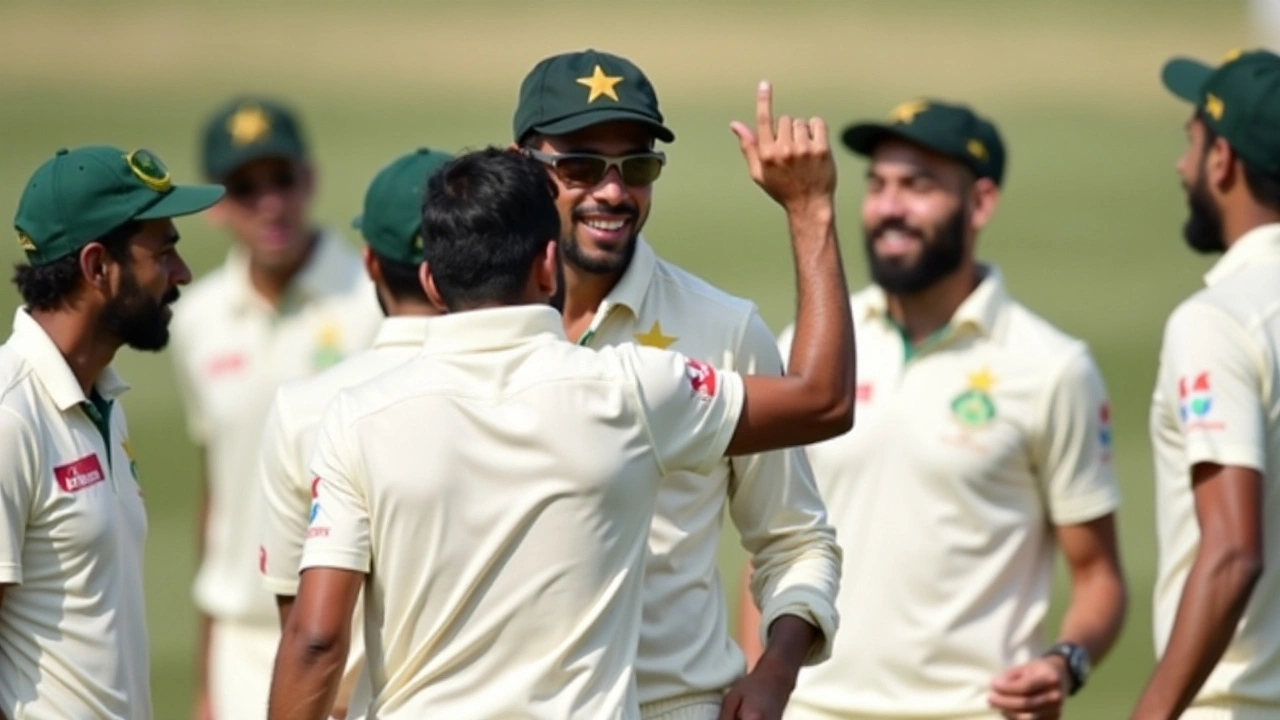Noman Ali's Historic Hat-Trick Cements His Place in Cricket History
 Jan, 25 2025
Jan, 25 2025
An Unprecedented Achievement in Cricket History
On January 25, 2025, the quiet town of Multan witnessed an electrifying event set to shine in the annals of cricket history. Noman Ali, a dedicated 38-year-old Pakistani spinner, marked a groundbreaking milestone by becoming the first-ever Pakistani spinner to take a hat-trick in Test cricket. Such an achievement wasn’t only a personal triumph for Noman; it also etched his name into the broader tapestry of international cricket, as fewer and fewer modern-day players accomplish such feats. The significance of this achievement resonates deeply, both for its rarity and the inspiration it offers aspiring cricketers.
The Memorable Hat-Trick
The setting was the second Test against the West Indies, conducted at the lively Multan Cricket Stadium, a venue brimming with enthusiastic fans and charged atmosphere. The hat-trick occurred during the 12th over when Noman Ali, with his strategic mindset and spinning expertise, dismantled the batting lineup of the West Indies with surgical precision. His victims were Justin Greaves, Tevin Imlach, and Kevin Sinclair, each falling in quick succession. Greaves was the first to go, being caught by Babar Azam at the second slip for 1. The tension escalated as Imlach followed, trapped lbw for a duck, provoking the crowd into a crescendo of cheers. Sinclair, attempting to withstand pressure, succumbed to Ali's first delivery, caught again by Azam, bringing the stadium to its feet.
Setting New Precedents
With this hat-trick, Noman Ali broke past records dominated by Pakistani pacers. Legends like Wasim Akram, noted for achieving two hat-tricks against Sri Lanka, Abdul Razzaq, Mohammad Sami, and Naseem Shah were all distinguished, yet none had accomplished this as a spinner. By doing so, Ali joined elite global cricketers who have hurdled the hat-trick barrier. His accolade places him as the second-oldest player to earn a Test hat-trick, a title held in preference by Sri Lanka's Rangana Herath. Ali's late blooming in the sport, a narrative that defies conventional expectations, greatly enriches his robust legacy.
Strategic Moves and Controversies
While Ali's hat-trick drew much acclaim, the strategic decisions behind the scenes warranted insightful analysis. Pakistan’s head coach, Aaqib Javed, backed the controversial decision to play on turning tracks. Such tactics suggested a broader strategy aimed at preparing the national team as contenders for the coveted World Test Championship final. According to Javed, winning consistently at home while securing some victorious test matches abroad builds a strong foundation. His statement—every nation tailors pitches to their own strengths—offered pragmatic perspectives on the complexities of international cricket war rooms.
West Indies' Phenomenal Recovery
Despite their initial setback, the West Indies team showcased remarkable resilience. Their tail-enders fought back, with Gudakesh Motie notably reaching his maiden Test half-century. His efforts, pivotal to the team’s drive, alongside contributions from fellow players, advanced the West Indies to a total of 163 runs before Ali struck again, dismissing Motie just before lunch.
Outstanding Performances from the Pakistani Camp
Ending the innings, Noman Ali's figures of 6-41 exemplified his commanding performance on home soil. Not to be sidelined, his fellow spin partner Sajid Khan, rendered two critical wickets. Meanwhile, debutant Kashif Ali added value to Pakistan's bowling lineup by claiming a wicket, signaling promising prospects for the country's cricketing future. These performances collectively underscored the strategic depth and dynamic versatility held within Pakistan's bowling arsenal.
The narrative of the Test series, already in Pakistan's favor, saw them clinch the first Test in Multan by a margin of 127 runs. Such dominant performances not only reflect the team's current form but also set the stage for future matches where the spotlight will be on sustaining—and enhancing—such momentum.